Coarse calico and its application
One of the most popular fabrics is coarse calico. Its use in Russia, began in the XVI century.
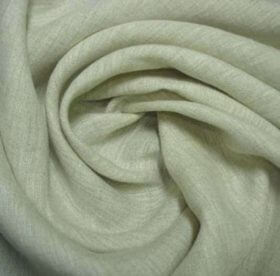
The best fabrics in terms of health care are natural.
Natural cotton product that does not cause allergic reactions and irritation on the skin, so it was used for sewing children's clothes, bed linen, lining for a caftan, making underwear, diapers for newborns and much more.
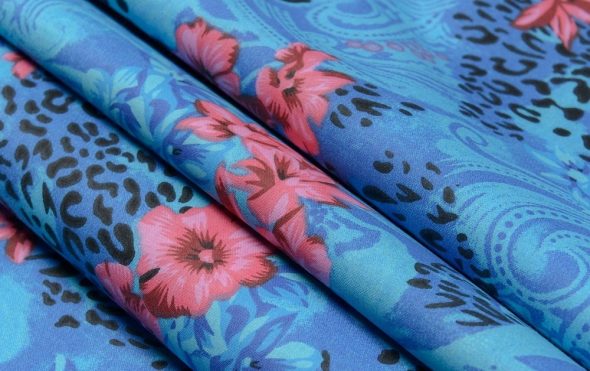
Calico - affordable and very practical cotton fabric
Content
Description, composition and properties
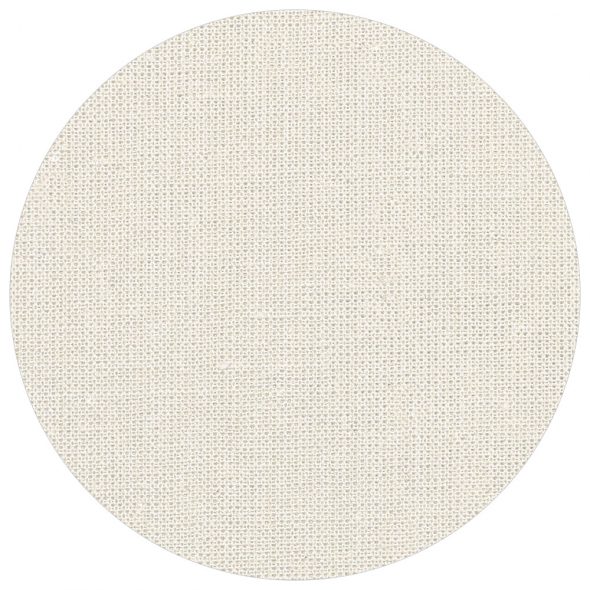
The structure of the fabric coarse calico linen thread
The fabric is made using simple plain weave technique, thereby giving it density, practicality and durability. In Russia, according to GOST, calico consists of only 100% cotton, and in Pakistan and China a polyester thread is added, which should not exceed 15% of the total composition.
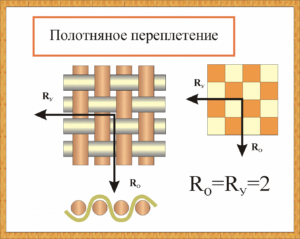
The simplest plain weave
Virtues
- With frequent washing preserves the size, color and pattern.
- The cheapness of the material.
- Well absorbs any liquid (hygroscopic).
- Does not contain allergens and substances harmful to the body.
- Very good breathable, allowing the body to breathe well.
- With great ease ironed.
- Not able to electrify
disadvantages
- The fabric is too matte, without gloss.
- When used very often, the pellets appear.
Types of calico
Calico is divided into 4 types:
- Harsh. This kind of fabric is very durable, in the manufacture undergoes the least processing. Mostly ivory color. The weight of threads per square centimeter ranges from 145 g to 160 g per 1 sq. M. Great for furniture upholstery or workwear.
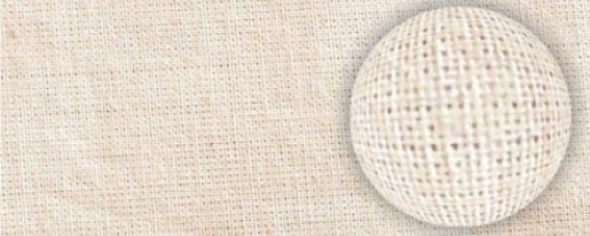
Harsh calico - the strongest and least exposed to additional impacts in the production process
- Bleached. Less durable than harsh, more tender to the touch, and also made from thinner threads. Used in the manufacture of bed linen (especially for hospitals, kindergartens, etc.)
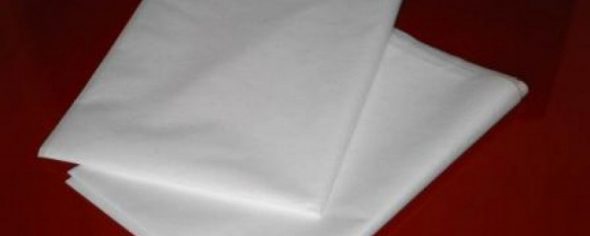
Bleached calico is made from thinner threads, more delicate and less durable
- Smooth painted The composition of the fabric is no different from bleached calico. It differs only by chipping in a single color without a pattern. Suits, bed sets, towels for the dining room and tablecloths are made of this type.
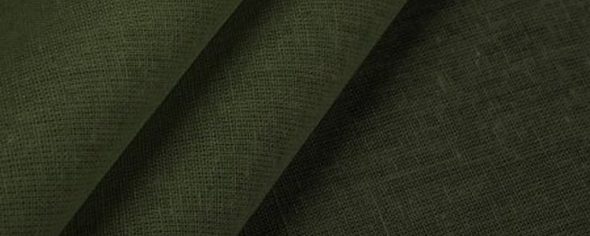
Smooth-colored calico is of the same type in structure as bleached, but differs from it in dyeing in a uniform color.
- Stuffed. It differs from the rest by a variety of patterns and patterns. Great for clothes for kids and adults, as well as in previous types, printed calico used for bedding.
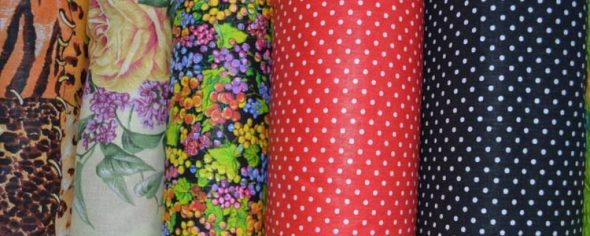
Printed coarse calico - fabric with various multicolor patterns and patterns
The main types of patterns are:
- in a cage;
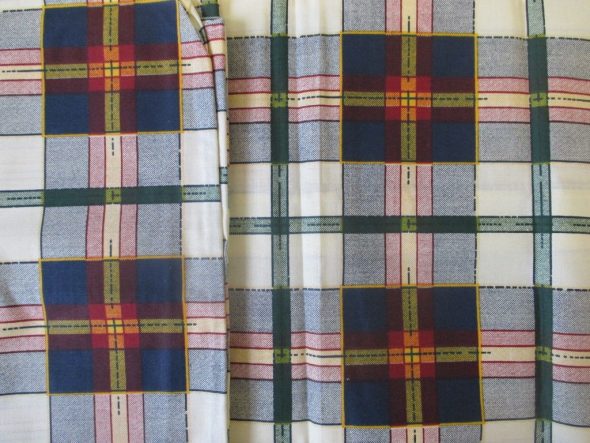
Fabric coarse calico
- dotted;
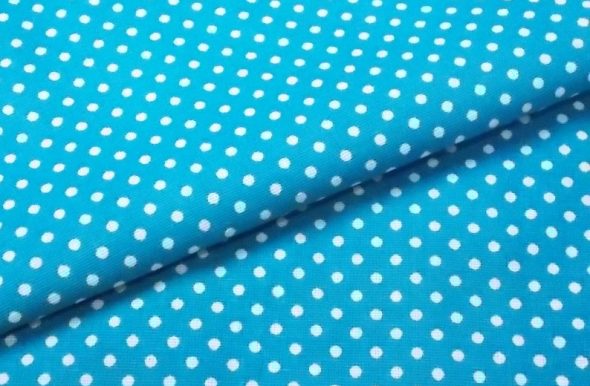
White calico with white polka dots
- symmetrical geometric patterns;
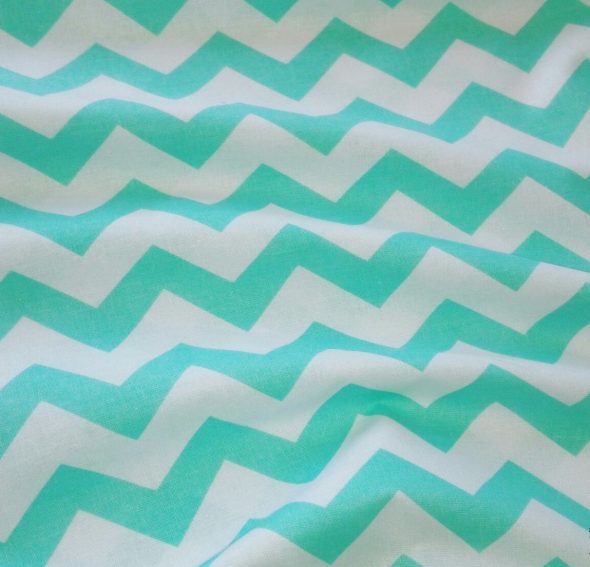
Coarse calico with white and mint zigzag pattern
- figure storylines;
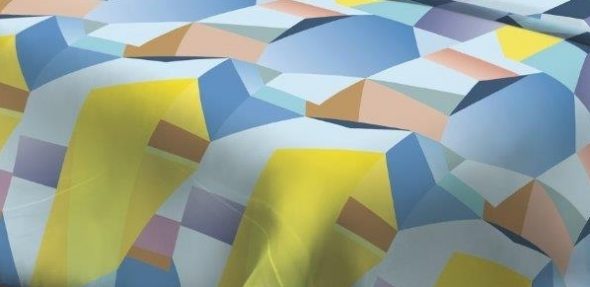
Calico with curly geometric lines on the canvas
- elongated and curved ovals;
- striped;
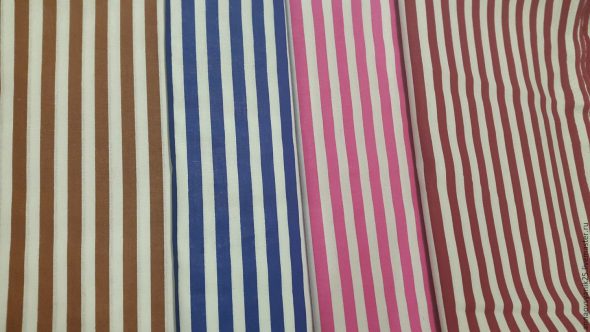
The color scheme of the fabric calico striped
- floral ornaments.
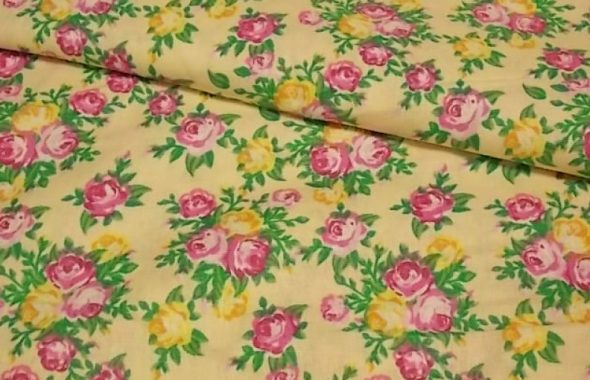
Coarse calico with pink and yellow roses on a yellow background
Unlike calico from other cotton fabrics
- Difference from polycotton. Polycotton consists of a mixture of polyester and cotton, ideal for bed linen, pillows and blankets. There are many types of material, depending on the number of threads in the composition. Owns distinctively good properties, thereby making it a competition for fabric from calico.
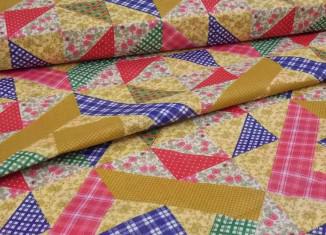
In the composition of polycotton there are always two essential components - natural (cotton) and artificial (polyester)
- Difference from poplin. Poplin is a matter in the manufacture of which threads of unequal thickness are used (horizontal thinner than vertical). In Russia, poplin is made only from cotton, in other countries in the production they use a mixture of cotton and synthetics in unequal proportions. Also, wool, silk and viscose are added to it. Visually distinguish between poplin and calico will not be difficult, since the first has a gloss and looks more refined than the second. Calico is more durable and resistant to wear, so to a greater extent it is used when sewing bed linen. Poplin was originally used for tailoring.

Unlike coarse calico, poplin has a surface with a small scar, which is formed due to interlacing of threads of different thickness.
- Difference from sateen. Ornate, tightly packed fine woven threads that give the material a shine, resembling silk fabric. What strength between satin and calico cannot be unambiguously said, it all depends on the particular production.
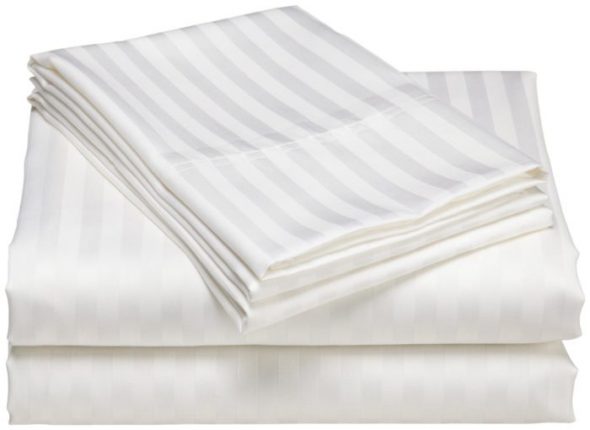
Satin has a smooth and shiny surface that looks like silk.
- Difference from chintz. To create calico take the thread thinner, and weaving remains the same as that of calico. In the manufacture of calico, only 100% cotton is used, in contrast to the calico which can contain synthetic fibers.
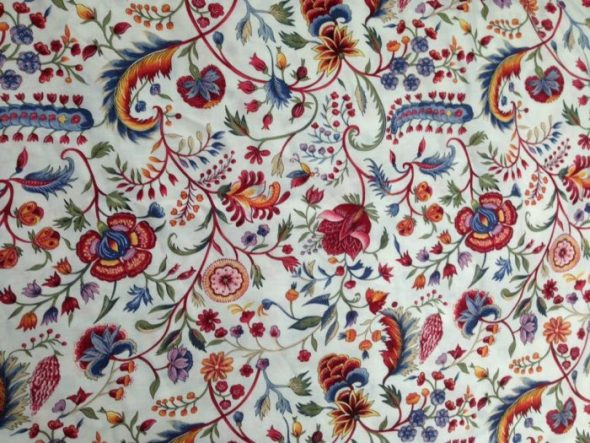
Calico and calico have exactly the same way of weaving threads, but calico is thinner and less durable.
- Difference from percale. Similar weaving. A distinctive feature is that the percale is much softer, thinner and attractive to the touch than coarse calico. With the help of bonding fibers, percale has sufficient density, thanks to which, bed linen made from this material is an elite textile.

Percale and calico combines the method of interlacing threads
Terms of use and care of products from calico
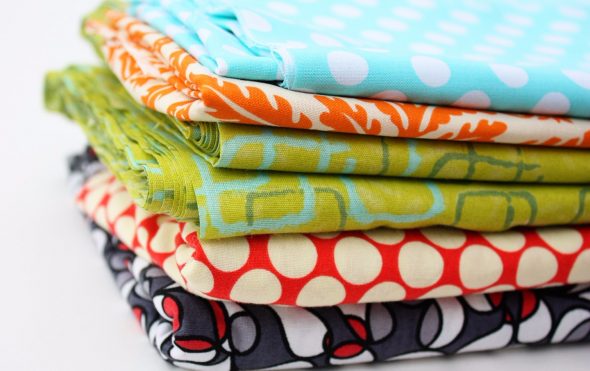
In order that the product does not sit down, it should not be washed at a temperature of more than 40 degrees
Basic and ingenious rules for care for calico no. Wash at 30 - 40 degrees, and adding absolutely any cleaners, as the calico is resistant to chemicals. In order to keep the product brightness, it is better to turn it inside out. When ironing, the laundry should be slightly damp, so it is easier to smooth out. It is possible to dry the calico in specialized automatic dryers.

The popularity of calico due to durability, strength, high hygroscopicity
Bedding of linen: only positive feedback
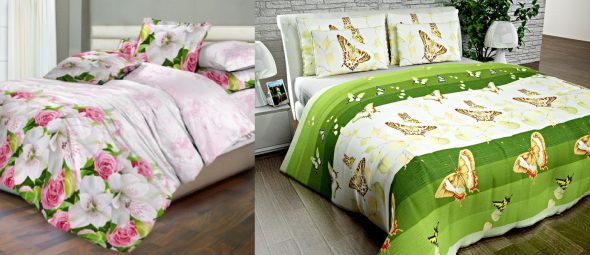
Calico is ideal for sewing high-quality bed linen
Coarse linen was well described in the household. Many housewives leave only positive feedback. When operating bed linen, it is easy to use, easy to use, does not change shape when washed and does not fade, which is the main criteria for a good material.
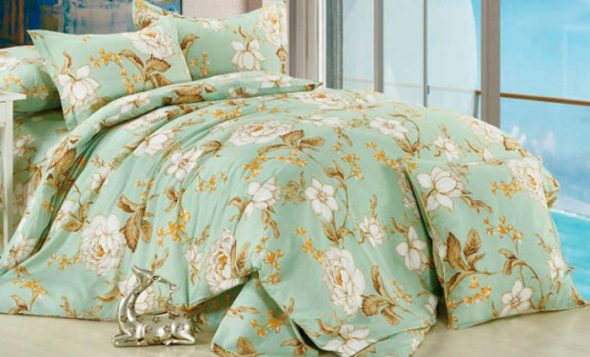
Bed linen is inexpensive and easy to use.
Calico has a large number of advantages. For a small price you can get a quality product that not only does not deform, but also has anti-fungal and anti-allergic properties, absorb moisture and sweat, allowing the body to breathe and feel comfortable. Using the latest technology, calico has a large number of types and a wide variety of colors and patterns that suit every taste.
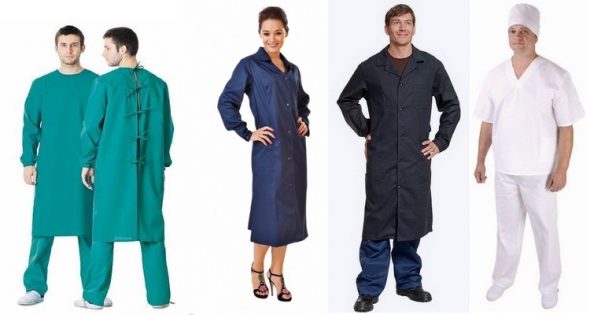
Often this material is used for sewing work gowns.
Video: What is calico and what does it eat?
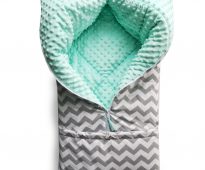 Blanket transformer for newborn
Blanket transformer for newborn
 Plush yarn blanket
Plush yarn blanket
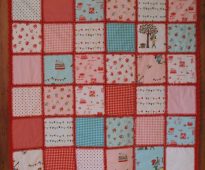 We sew a quilt with our own hands
We sew a quilt with our own hands
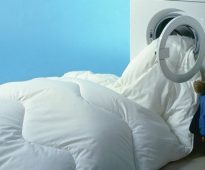 How to wash a blanket?
How to wash a blanket?
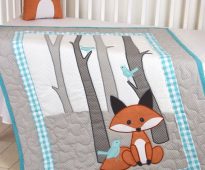 Choosing a blanket for a newborn
Choosing a blanket for a newborn






